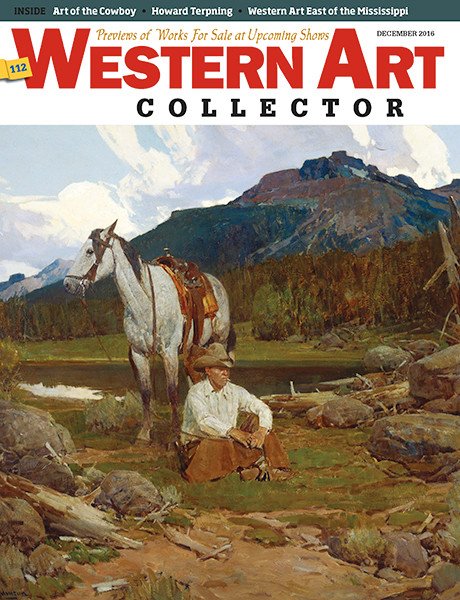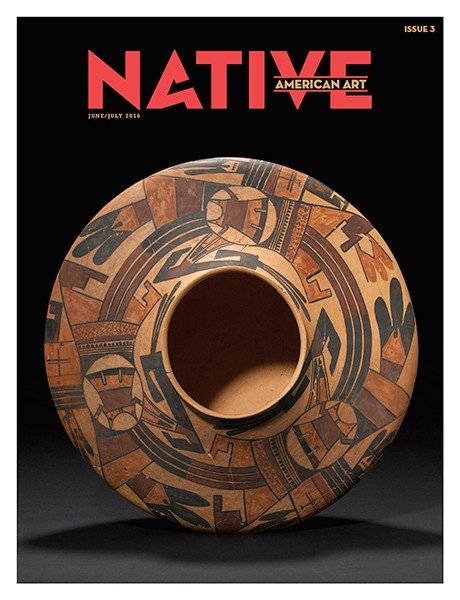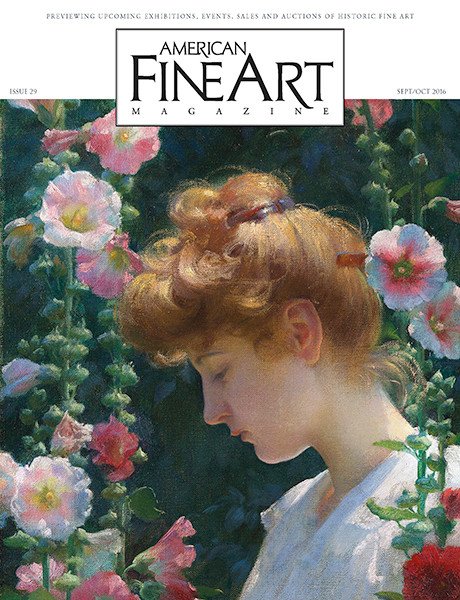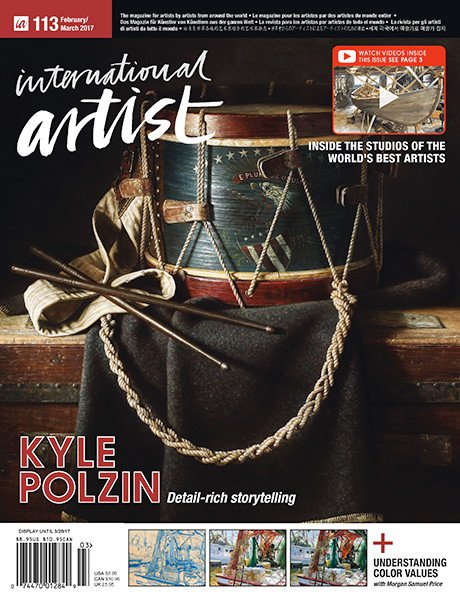Between 1971 and 1985, Andrew Wyeth worked secretly to create 268 paintings using one model as the subject of all the works. By 1986, when the existence of the pictures was revealed, it created a stunning sensation in the art world: One of America’s greatest living painters hides a secret collection of work! It was headline news.

Making Art titles. A total of 36 short films have been made in the series, which is still ongoing.
The model, Wyeth’s neighbor in Chadds Ford, Pennsylvania, was Helga Testorf, who, after the revelation of the paintings now known as the Helga Pictures, became something of an overnight celebrity. But after several initial and brief interviews about Wyeth and the paintings, Testorf soured on the attention and retreated to her private life. She would remain out of the public eye until 2018, when Tennessee filmmaker Jesse Brass pointed a camera at her and allowed her to tell her own story for the first time in more than 30 years.
“It was a remarkable experience being with her,” Brass says. “We were out in the hills as these crows were flying over. At one point we were on Snow Hill, and there was such a spiritual aspect to it that came out really strong as we talked one of the last times.”
The video was a huge hit and was later picked up by The Atlantic,which shared it to an even broader audience. Suddenly, after decades away from the spotlight, there was Helga, in color and talking for the first time about Wyeth, the paintings, the secrecy of the work and the love she shared with the artist.

Jesse Brass on location.
To those who had been following Brass and his projects, his serene and thoughtful film on Testorf was not a one-off, but further proof that the filmmaker was onto something special in the art world. And it all began with the Making Art series in 2012.

The real origins are in 2008, when Brass’ daughter was born and, like many new fathers, he wanted to record short videos of his new baby. Before long he was assembling the footage into edited videos with music. Brass, then a graphic designer, quickly became fascinated by the intricacies of film: the cinematography, the audio mix of music and spoken word, the ability to get people to open up about their private lives and the painfully important editing phase where everything was supposed to come together. In 2012, a video was posted to Vimeo with the title Texture. It focused on the work of Brass’ mother, painter Donna Brass. But the video was directed by Jesse’s brother, Matt Brass, who played a vital early role in the creation of their hit Making Artseries. The short three-minute film garnered enough attention that it won a weekend video contest on the Vimeo platform. “I think Matt won a short membership to Vimeo or something like that,” Jesse says. “It wasn’t much, but it was something.”

Artist Zaria Forman with Jesse Brass’ nephew and occasional collaborator, Tim Brass.
Matt would go on to direct five of the next seven Making Art shorts, including videos on a young student, an architect, a piano player and a sculptor. One later and hugely popular video was Fantasy, featuring eccentric artist and metal fabricator Randy Cross. “The whole project was born out of that first interview with my mom. She said something so intriguing to me. I asked her why she did art, and she said, ‘I don’t know why, but I have to. Art is a problem and I have to solve it.’ That resonated with me,” Matt says. “That question became the central question for all the videos I made. They weren’t really about art, but the motivation to make art. Over the years, Jesse and I got some interesting answers.”
After Matt’s initial run with Making Art, Jesse took more of an interest and eventually started creating the bulk of the 36 entries in the series, which is still ongoing. At one point early in the series, he used Kickstarter to fund a trip to Toronto to record a group of artists for a series of videos. The trip was a monumental success that yielded films on artists Jane Duncan (Artifice), Jen Mann (Magic), Christine Kim (Revelation) and Bill Lishman (Motion), whose ultra-light flights with geese served as the basis for the motion picture Fly Away Home, in which a character based on Lishman was played by actor Jeff Daniels. (Lishman died in 2017, not long after the video was released. Motion was one of the final pieces of video of the artist.)

Jesse Brass, left, behind the scenes with artist Mario Robinson.
“This was the most invigorating creative expression I’d ever done and I suddenly understood the strong connection artists had with making fine art,” Jesse says. “The Toronto trips just changed my whole mindset. I went into the city with two bags of video equipment, and I’m talking to people, several of them were quite renowned, and getting this really great response. It really expanded my confidence.”
Follow-up videos included short films on hyperrealist sculptor Carole Feuerman (Strength), abstract painter Sarah Winkler (Moment) and contemporary still life and figurative painter Alonsa Guevara (Desire), as well as a number of American Art Collector regulars like Zaria Forman (Perspective), Mario Robinson (Truth), Alyssa Monks (Connection) and J Louis (Intimacy). Each short has its own unique flavor, but generally they all offer glimpses inside an artist’s studio as they talk about creating art, why they do it and what inspires them. Nearly all of the videos are narrated entirely by the artists themselves.

Helga Testorf, Andrew Wyeth’s muse, in Chadds Ford, Pennsylvania, in 2018.
Two of the videos, one on Betsy Eby (Gravity) and another on Bo Bartlett (Ineffable), cracked open new opportunities for the filmmaker. Eby and Bartlett, who are married and both highly regarded in the art world, enlisted Jesse to work on several other projects, including Bartlett’s Lobster Dinner and the couple’s feature film, Things Don’t Stay Fixed. This laid the path directly to Helga.
“Jesse Brass is a great filmmaker. We have worked on five films together…He is an artist…poetic and efficient…When working with Jesse, he seems to almost disappear, this allows us to go about our business, to be ourselves, and not be self-conscious. I trust Jesse. He is something of a genius. He has a highly developed visual sense. And his musical choices are impeccable,” Bartlett says of the filmmaker. “He weaves a visual tapestry which, while representing the work of the artist he is featuring, still embodies his own highly personal style and ethos. He is very patient and his editing process can take a while. He works laboriously on them. But, once the films are completed, the edits are intuitive and seamless…invisible. I would happily work with Jesse on any film project.”
On the subject of Wyeth’s muse, Bartlett continues: “We made the short documentary film Helga together (with Betsy producing) after Helga came to me saying that she wanted to tell her side of the story. Helga had been Andrew Wyeth’s model and constant companion for the last 40 years of his life. Jesse crafted a sensitive, thoughtful, poetic film in which Helga reveals the depth of her relation with Wyeth, without being sensationalistic or exploitative. A fine line. Jesse constantly amazes me. He is in a category all his own. He was the second [director of photography] on our feature film Things Don’t Stay Fixed, a role that he was initially uncomfortable in but which he adapted to quickly. His shots retained his unique eye and helped give the film its distinctive look.”

A camera shot showing artist Sarah Detweiler.
During the Helga shoot, which was largely arranged by Bartlett and Eby, Jesse tried to remain invisible to help Testorf grow more comfortable in front of the camera. Inside he was screaming with excitement because Andrew Wyeth was a superstar in the Brass household. His mother even gave him Wyeth as a middle name, and there he was in front of the artist’s most famous subject.
“It was the ultimate experience," Jesse says. "The first day Bo and Betsy drove me around and they kept warning me that Helga was really intense, and a little eccentric. When she came outside she took us into this garage area full of boxes and in the middle of the garage was this tiny elevator. Everyone goes to get in and the first thing she said to me was, ‘Get in here you scary boy.’ We ride up to the second floor which is her studio. Everything was white with these gold paper plates on the table, set almost like a church. She had this boombox that she put this loud German folk music on, sort of like a polka-type music, and she played it so loud. She’s almost yelling at us, ‘Have you ever been to Germany?’ That was my introduction to Helga.”

Behind the scenes with sculptor Carole Feuerman.
The 24-minute short film would not only answer some age-old questions about the Helga Pictures and Wyeth, but it would also inspire dozens of new ones. For Jesse’s part, and Bartlett and Eby’s as well, they weren’t looking for titillating details or lurid gossip about Wyeth. They wanted Testorf to share her story as it unspooled from her. They wanted her to speak, and for her to be heard.
As Jesse assembled the video, the initial version was edited together with still images of the Helga paintings. Before the video could be published, the Wyeth estate had to approve them. At one point the Brandywine Museum of Art was involved as well. For a brief moment, the filmmaker was considering the possibility of having to remove the images, which would have lessened the impact of Testorf’s words. In the end, though, the decision fell to Andrew Wyeth’s son, Jamie Wyeth.

Behind the scenes with Bill Lishman, the subject of the feature film Fly Away Home.
“Jamie Wyeth was really short about it and I don’t have his exact words, but he was very complimentary of the story we put together and approved the usage of the images,” Jesse says. “The words we got back from the museum were great, too. We were told this was a story that had to be told and that we did it with great sensitivity, and probably the best way the story could be told. That meant a lot.”
What’s ironic and wonderful about someone like Jesse Brass is how he started out creating videos about artists, and then became one himself in the process. He is still creating Making Art films today. They can be seen at makingartfilms.com. —
Powered by Froala Editor





































